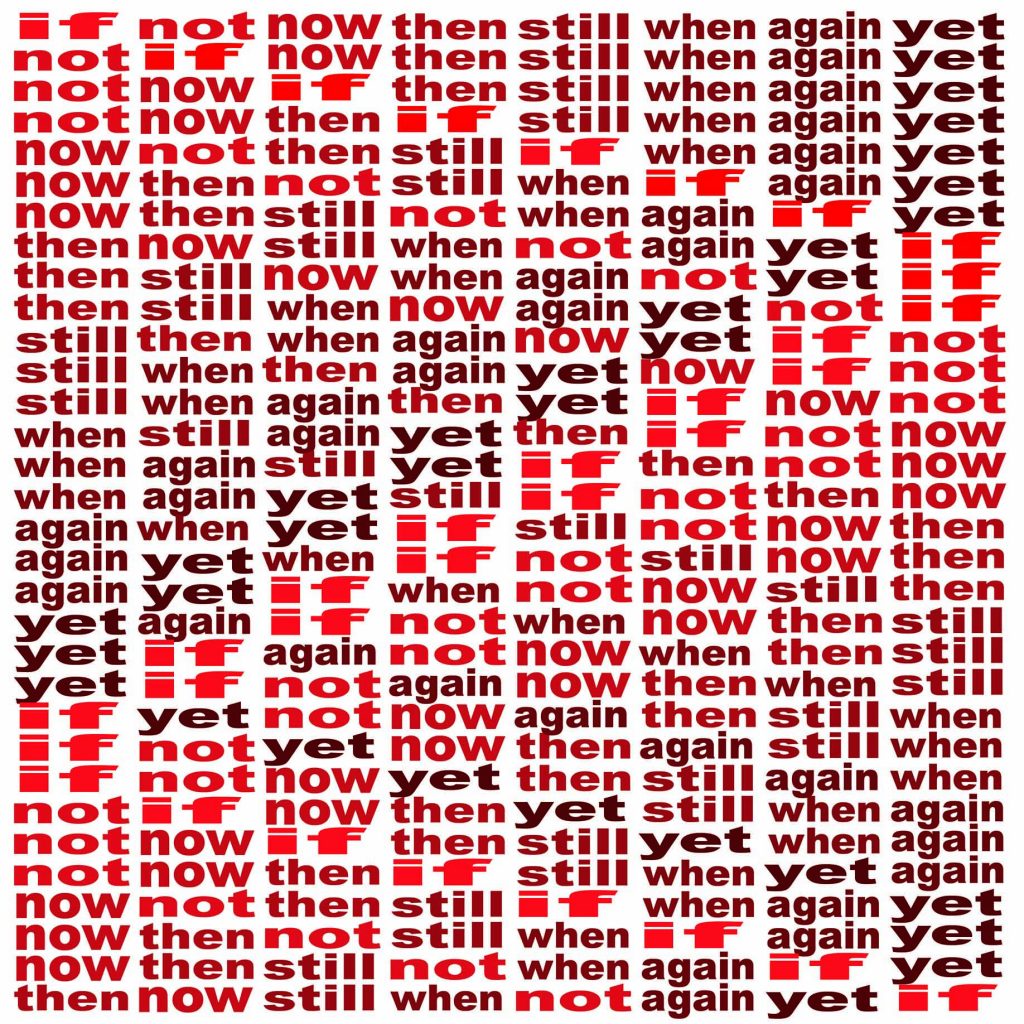The eight participants sit in a circle and pronounce certain given words in specific, mathematical patterns as directed (see patterns). The words the participants are assigned are adverbs (for example: ancora, ora, già, mai, poi, allora, forse, dopo) that flex with syntactical placement and inflection and connect easily to each other to form verbal fragments that mimic colloquialisms (for example: ora o mai più, mai e poi mai, prima o poi, senza forse…etc). As one pronunciation follows the other in circular succession, the continuous flow urges the distillation of sense from nonsense, prompting the participants to test their creative autonomy against the rigidity of the structure. Participants react and respond to verbal cues from each other in an escalation of expressive possibilities as freedom and spontaneity are incrementally increased throughout the piece. A collective construction emerges beyond the strict verbal assemblage revealing the transfer of emotional content through a richly imprecise and malleable language within an improvised ritual of social communication.
